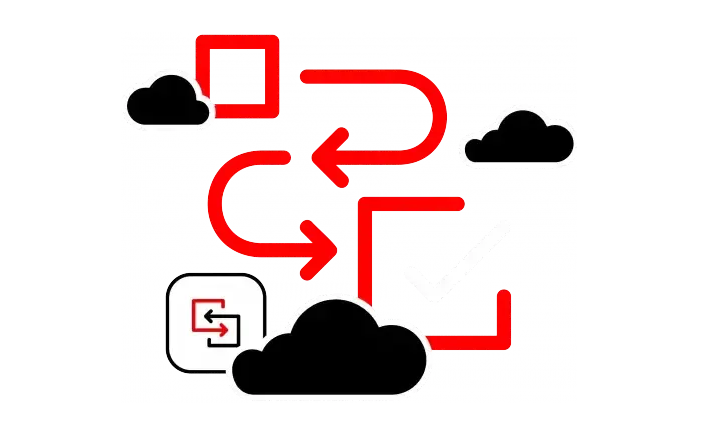Use cases and migration paths for Migration Toolkit for Applications
Evaluate container-suitability, analyze source code, and modernize legacy applications to cloud-native technologies faster with the migration toolkit for applications. Architects can build and manage application modernization plans, while developers get transformation tools to execute migration paths with less manual effort. Red Hat’s migration toolkit for applications is included with a Red Hat® OpenShift® or Red Hat Application Foundations subscription.

We've summarized the most commonly used migration paths in the following table:
Source platform | Targets | |||||||
Migration to JBoss EAP 7 & 8 | OpenShift (cloud readiness) | OpenJDK | Jakarta EE 9 | Camel 3 & 4 | Spring Boot in Red Hat Runtimes | Quarkus | Azure App Service for EAP apps | |
| Oracle WebLogic Server | ✔ | ✔ | ✔ | - | - | - | - | - |
| JBoss EAP 4 | ✘ [1] | ✔ | ✔ | - | - | - | - | - |
| JBoss EAP 5 | ✔ | ✔ | ✔ | - | - | - | - | - |
| JBoss EAP 6 | ✔ | ✔ | ✔ | - | - | - | - | - |
| JBoss EAP 7 | ✔ | ✔ | ✔ | - | - | - | - | ✔ |
| Thorntail | ✔ [2] | - | - | - | - | - | - | - |
| Oracle JDK | - | ✔ | ✔ | - | - | - | - | - |
| Camel 2 | - | ✔ | ✔ | - | ✔ | - | - | - |
| Camel 3 | - | - | - | - | ✔ | - | - | - |
| Spring Boot | - | ✔ | ✔ | ✔ | - | ✔ | ✔ | - |
| Any Java application | - | ✔ | ✔ | - | - | - | - | - |
| Any Java EE application | - | - | - | ✔ | - | - | ✔ | - |
| [1] Although the migration toolkit for applications does not currently provide rules for this migration path, Red Hat Consulting can assist with migration from any source platform. | ||||||||
| [2] Requires JBoss Enterprise Application Platform expansion pack 2 (EAP XP 2) | ||||||||
